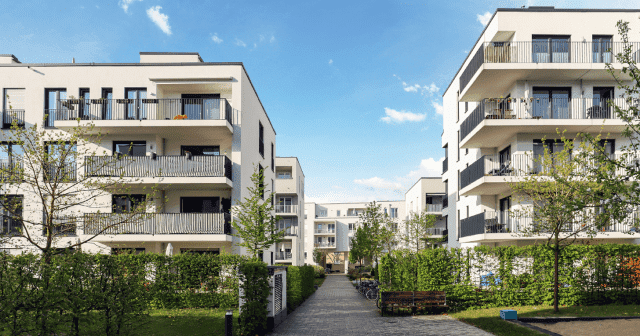East Africa Property
Author: Somaya Joshua, Head: Commercial Property Finance, (Pan Africa-outside SA), Absa Corporate and Investment Banking
Positive GDP growth forecasts for Tanzania, Uganda, and Kenya support the continued development of a robust commercial real estate economy despite macroeconomic and geopolitical tensions impacting the region.
Investor appetite in the East African property market seems to support the heightened levels of optimism that points towards emerging asset classes.
Light industrial development ripe with opportunities
The industrial sector continues to benefit from an increase in e-commerce, localised storage, and localised manufacturing requirements as producers/manufacturers look to reduce their reliance on internationally manufactured goods.
The asset class has shown resilience, is retaining value, and continues to benefit from low vacancies, product innovation and increasing inventory requirements to minimise supply chain disruptions experienced during Covid and prolonged as result of Russia-Ukraine War.
For example, Africa’s demand for packaged medicines is worth $18bn a year, of which only 36% is currently produced locally, and only 3% of demand is met by Intra-African Trade. This is only one example of an industry ripe to grow and benefit this asset class.
Light industrial property developments are key to seeing more industries develop in East Africa and present the ideal opportunity for foreign investors looking for new markets. Kenya, for example, is targeting investors to establish manufacturing plants in its special economic zones, specifically in electronics, textiles, pharmaceutical, and medical devices, as well as the lift and escalator sectors. This is leading to an increase in demand dynamics which will benefit rental escalations over the medium term given the emerging nature of the asset class.
Data Centres are en vogue
Somewhere between US$5-6bn will be invested in carrier neutral data centres in Africa over the next 3-5 years, with firm commitments from companies such as Vantage (US$1 billion), Africa Data Centres (US$500m), WIOCC’s Open Access Data Centres (US$500m), and Colo West (US$259m).
The increase in demand for data centres is driven by several factors including the need for global connectivity, hybrid ways-of-work, a growing population, and regulatory pressures to onshore data storage in Africa, moving away from dependencies for data storage in North America, Europe, and Asia.
Kenya, one of Africa’s primary data centre hubs, is considered the gateway to the East African region and hence a prime location for new developments with Africa Data Centres (ADC) announcing three new projects to be developed. The first broke ground in January this year, while plans have started for the development of a second, and land being secured for a third.
Opportunities for investment in the Healthcare sector
With economic growth and trade activities continuing to rise in East Africa there is increased focus on the provision of healthcare including hospitals, laboratories, pharmacies, and frail-care facilities.
An example of this is Kenya which is seeing between 3000 and 5000 people from other African countries traveling for medical procedures. This presents opportunities for developers in the East African region looking to diversify existing portfolios and consider ways to monetise longer-term debt as they optimise their balance sheets.
Rapid urbanisation leads to increased housing demand and investment despite rising inflation and interest rates
More opportunities to bring suitable affordable housing products to market must be unlocked as urban populations continue to grow. Across East Africa, urban population growth estimated at 4.5% to 5% is driving increased housing demand in a market where the affordable housing stock deficit is at c2 million dwellings.
Policymakers are responding to rising inflation by raising interest rates and, while this adversely impacts affordability, it is not reducing demand. An increase in the development of affordable housing stock is notable and is necessary to address pent up levels of demand given the apparent housing stock deficit.
We also see accelerated momentum for investment into affordable rental housing. Whilst rental models that cater to the premium international expat market are benefitting from the end of Covid restrictions, the real growth we are expecting is in the affordable sector, catering to local demand dynamics.
Sustainable student housing
Absa recently signed a KES6.7 billion financing arrangement with Acorn D-REIT Student Accommodation to support the development of up to 10 purpose-built student accommodation (PBSA) projects in Nairobi and its environs. With a student housing deficit of at least 300,000 beds in Kenya, the market is heavily underserved. This helps to address the need for sustainable housing through a sustainable finance solution.
The client base in Africa is increasingly adopting the principles around Environmental, Social and Governance (ESG) and Sustainable Financing solutions. The Acorn transaction serves as a catalyst to what we believe will unlock more sustainable funding solutions in the East African region.
Overall, markets in the East African region are becoming more transparent and are experiencing a keen interest to ease some of the barriers of doing business. We are also seeing an increased appetite from investors to respond to demand across sectors. As a leading pan-African bank, we remain committed to delivering sustainable funding solutions to our clients that continues to promote economic progress in East Africa.





